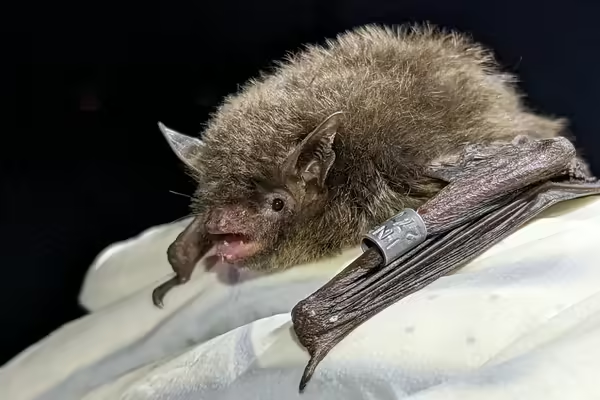
URBANA, Ill. — Fluttering overhead at night, quiet except for their squeaks, bats can be easily overlooked, but these small mammals play a big role in the ecosystem. Bats are also at risk. Illinois is home to 13 species of bats, and more than half of them are listed as endangered, threatened by changing landscapes, disease, climate change and more.
Landowners and homeowners with trees on their property can help support bats with tips from the guide Managing Forests for Bats in Illinois, available for free at go.illinois.edu/ForestryforBats.
Joy O’Keefe helped author the guide. Her research focuses on helping bats and humans coexist, and she works with those who interact with them — anyone from private landowners to federal and state agencies — to help support populations.
“Bats are fascinating and unique mammals, but we know they are in peril in the U.S. and worldwide because of habitat loss, disease, climate change, and more,” says O’Keefe, assistant professor, department of natural resources and environmental sciences and wildlife extension specialist. “With this guide, we hope to help landowners feel confident taking steps with their trees to support bats.”
The new guide outlines simple ways to manage trees or a forest for bats. Tips include preserving dead and damaged trees to provide roosts, maintaining native tree diversity, and adding native shrubs to provide foraging habitat. By eating insects such as flies, moths, and beetles, bats reduce insect populations and help protect young trees.
Both individual trees and large tracts of forest, like those found in Southern Illinois, can provide habitat or food sources for bats.
“Bats are an amazing group of wildlife that use Illinois forests and landowners can really support them,” says Evans, Forestry Extension and Research Specialist. “Even a few small changes to a forest can have a huge impact on improving bat habitat.”
The guide was developed in partnership with the U.S. Fish and Wildlife Service and was authored by O’Keefe, Evans, Johhny Baakliny, University of Illinois Department of Natural Resources and Environmental Sciences, and Matthew Mangan, U.S. Fish and Wildlife Service.
Find more information about bats in Illinois at www.wildlifeillinois.org/gallery/mammals/other-mammals/bats.
SOURCE: Joy O’Keefe, assistant professor Department of Natural Resources and Environmental Sciences and Wildlife Extension Specialist; Christopher Evans, Forestry Extension and Research Specialist.
Illinois Extension leads public outreach for University of Illinois by translating research into action plans that allow Illinois families, businesses, and community leaders to solve problems, make informed decisions, and adapt to changes and opportunities. Illinois Extension is part of the University of Illinois Urbana-Champaign College of Agricultural, Consumer and Environmental Sciences.